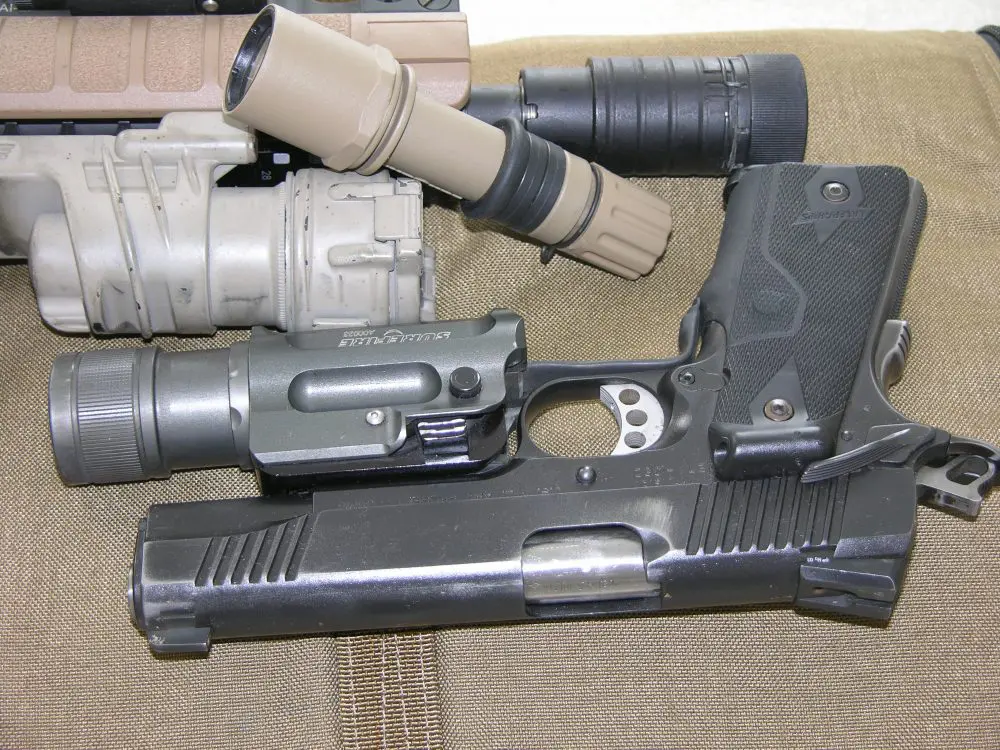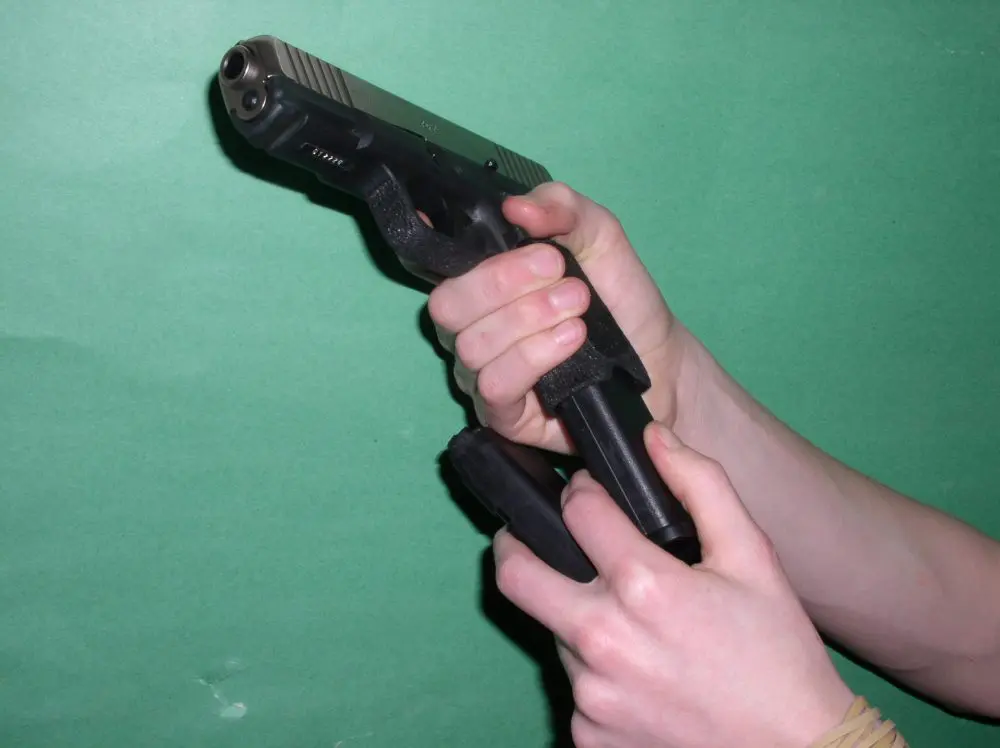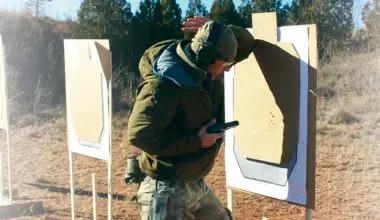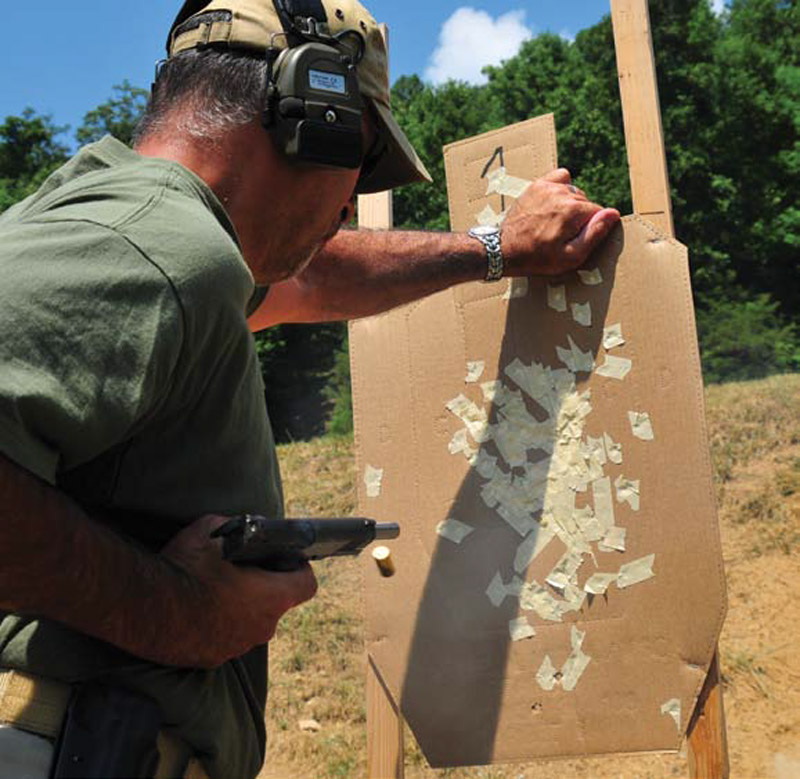

During the last stage, both shooters proved that their gun handling and manipulation skill levels were relatively equal. So why did one shooter lose by just under one fourth of one second?
I imagine that he is still questioning his trigger speed, sight picture, drawstroke and many other things except what actually cost him the match.
I picked up on his fault as soon as the timer buzzed its 90-decibel start tone. He danced! Not much, mind you. Just a slight shuffle of the support side leg as his hands led toward the waist and his holster.
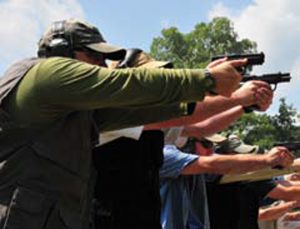
We can break down the nature of almost any human movement by ¼-second intervals. If we divide any series of actions by that time frame, it’s possible for us to identify ways to streamline our actions.
Table of Contents
THE MATRI X
I’m the Senior Staff Instructor at Practical Firearms Training (PFT). Through years of training and observing literally thousands of student shooters, the other PFT instructors and I have witnessed the time lapses in techniques. By watching a student participate in comprehensively focused firearms training, we have made note of average times, begun to watch an efficiency of motion develop from the subconscious mind of a trained shooter, and seen quarters of seconds fall off timed skill sets.
These observations aided us in creating a training matrix that has allowed us to capitalize on these observations and refine the idea of eliminating all unnecessary movements. If we use the example of the aforementioned shooters and put their actions into a narrative of movements, we can further break down how, when and where they lost crucial time during the competition.
THE BREAKDOWN
Both shooters stepped to the line with similar equipment: Kydex belt holsters (without retention devices), no concealment garments, and both shooting 9mm Glock handguns. They shook out their hands, turned their necks and relaxed the knees, at which time the range officer announced “Stand by!” Both shooters moved slightly in their positions and waited for the buzzer.
The start tone sounded, and the shooters took 1/4 of one second to recognize and react to the tone. The movement from the ready position to the grip of the weapon was also 1/4 of one second and, as their fingers wrapped around the grip of the weapon and presented it to the target, another 1/4 of one second elapsed.
The weapons’ barrels coming level to the target and the weapons being presented to the target stripped yet another 1/4 of one second from the clock, as their barrels came to the level of the target and the extension of the shooters’ arms drove outward and their index fingers moved to the trigger. All of the action described so far occurred in one second’s time.
Their eyes picked up the sights within their cone of vision, the slack was pressed out of the trigger, and the last few pounds of resistance broken through as the shots sounded out and the steel plates fell. Both of these actions took place within the next onehalf of a second. Total elapsed time was 1.5 seconds—for the winner. The second- place finisher came in at 1.75 seconds. That’s 1/4 of one second slower than his challenger in this competition.
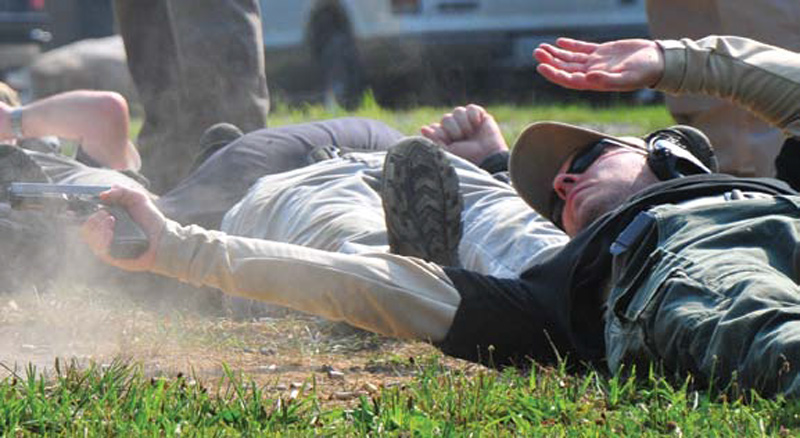
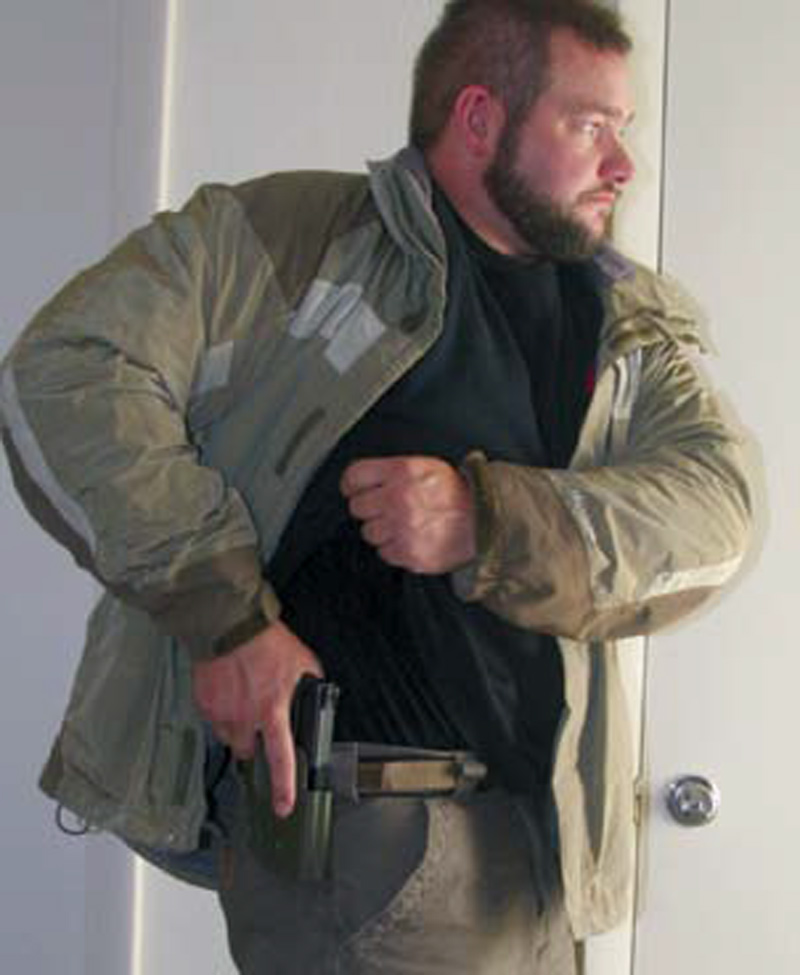

REAL LIFE
However, this was possibly a quartersecond slower than the knife or baseball bat coming at him from one of the millions of criminals wandering through our neighborhoods and communities. While this might be discounted as a minor annoyance within the realm of competitive shooting, it was a potentially deadly mistake on the street.
What was his mistake? It was a totally unnecessary movement of his support- side foot that got subconsciously wedged between his brain’s signal to his body to move and his hand reaching for his weapon.
He was set. The range officer gave the stand-by command and he shifted, planted his foot, and focused. At that point he was ready. But something happened to his mindset when the buzzer sounded. He lost faith in his position and could not cope mentally with the possibility of being slightly out of alignment, and he lost the competition because of it.
In real life, we don’t always get to determine our time frame. On the street, the time that we have to engage the threat is dictated to us by the threat (target time) and not by the range officer (shooter time).
REACTION , NOT ACTION
The glaring eyes of a possible threat on a not-so-crowded street equal the standby command of the range officer, and you are playing the scenarios out in your head instantly. You have to, because if we add up all of the quarter seconds in a live-fire confrontation, we have a hell of a lot more than 1.5 seconds’ worth.
The muscular body flinch you have when things go really sideways is the timer going off, and you are now reacting to the threat instead of acting upon a target. In a defensive capacity, we are forced to recognize a threat, react to it and use the proper amount of force to deal with it. The criminal has already determined what he is going to do. It is far more difficult (and slower) to react to a possible threat than take direct action. In the simplest of terms, action is faster than reaction.
A layer of clothing adds at least 1/4 second to your response, as do many of the retention devices on holsters, forcing a less-capable person to add another 1/4 of a second to the clock.
If your attention span allowed something to surprise you, then your lack of mental focus on your surroundings lets you be startled or at least marginally delayed by your attacker. This corresponds to adding multiple increments of 1/4 seconds as your brain processes what to do and then formulates reactions to these stimuli. This includes not being confident enough to shoot from whatever position you find yourself in, and adjusting your position to your “range ready” stance will give you no real chance of survival on the street—save blind luck.
IMPERFECT CONDITIONS
On the line in training, the shooting solution is dictated to you by the instructor or your own thoughts. This includes that when you are ready, you draw, taking your time and making the hits. Everything is ready, everything is perfect, and Heaven forbid that it’s raining on your range day and you go to the bookstore instead of training in adverse conditions.
When the threat is dictating the time frame (more than likely very compressed) to you, you either have to make adjustments as to how you are shooting, or move in a way that extends your time to more effectively engage the threat.
The two rounds you normally deliver center mass of a paper target at seven yards before dropping your weapon to assess may go wild or have no effect on your adversary, who is pumped up on some stimulant, unimpressed with your feeble attempt and keeps coming. The seconds you waste in your “low-ready assessment” and re-engagement are still being divided by those pesky quarter seconds.
No one can know when a lethal force encounter is going to happen, and we can’t “game it” like a competition we go to on the weekends. What we can do is streamline our movements to waste no time or effort.
EFFICIENCY OF MOVE MENT
If you can stand and perform a dry-fire draw a thousand times and have obtained all the speed you can, then it’s time to begin adding necessary movements to get yourself off the line of attack. You can do this by taking a few steps diagonally backwards to the right for a few thousand repetitions and then the same to the left for another thousand rounds while continually adding more layers and elements to your individual defensive measures. You must continue to practice your “gun katas” until you can no longer be defeated by these excess quarter seconds.
My friend and mentor, Pat Goodale, is often quoted as saying that “Practiced efficiency of movement equals speed.” More often than not, we hear it as, “Slow is smooth and smooth is fast.” But what are we really telling a shooter when we say that?
We are saying, move with a more efficient and direct action, and omit wasted and extraneous motion. This eliminates those quarter seconds and equips shooters with the proper tools and reaction time to survive the fight.


